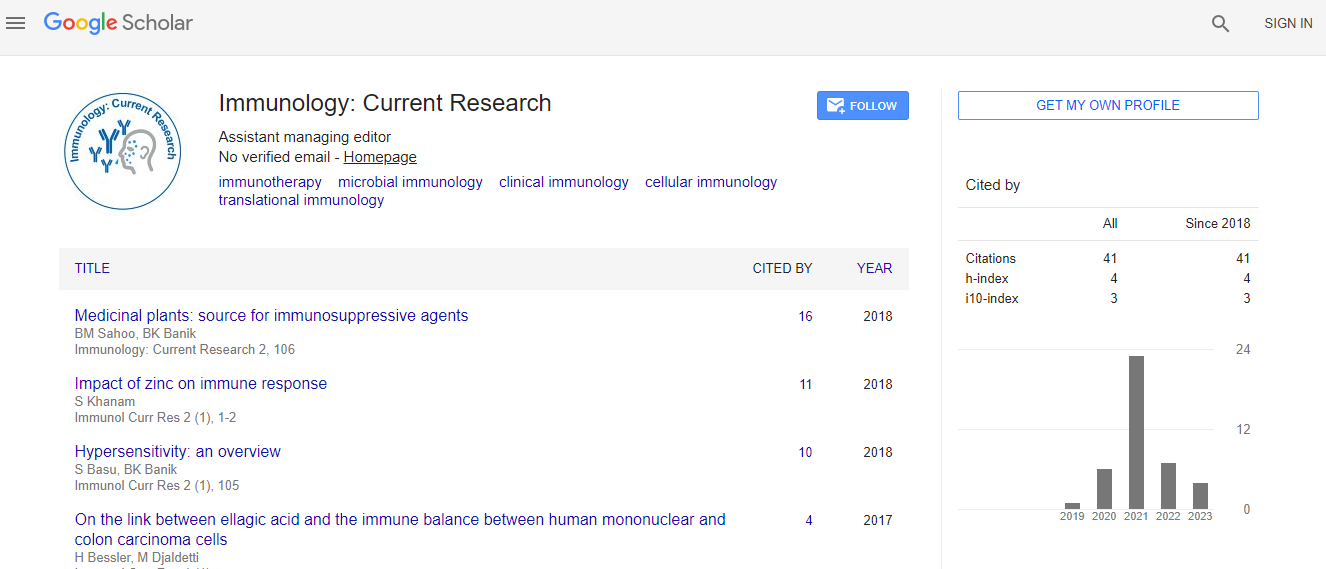Exploring the Dynamics of the Immune Response: From Innate to Adaptive Immunity
*Corresponding Author:Received Date: Jan 01, 2025 / Accepted Date: Jan 31, 2025 / Published Date: Jan 31, 2025
Citation: Zhang X (2025) Exploring the Dynamics of the Immune Response: FromInnate to Adaptive Immunity. Immunol Curr Res, 9: 238.DOI: 10.4172/icr.1000238
Copyright: © 2025 Zhang X. This is an open-access article distributed under theterms of the Creative Commons Attribution License, which permits unrestricteduse, distribution, and reproduction in any medium, provided the original author andsource are credited.
Abstract
The immune system is a complex network of cells, tissues, and organs that work together to protect the body from
pathogens. The immune response is categorized into two primary arms: innate immunity and adaptive immunity. Innate
immunity is the first line of defense, providing a rapid, nonspecific response to pathogens. It involves barriers such as
skin, mucous membranes, and a variety of immune cells including macrophages, neutrophils, and natural killer cells.
Adaptive immunity, on the other hand, is slower to activate but highly specific and capable of memory. It involves T
and B lymphocytes, which recognize specific antigens and generate an immune memory. This paper explores the
dynamics of the immune response, from innate recognition to the activation of adaptive immune mechanisms. It
also examines the interaction between these two arms, highlighting the critical role of antigen presentation, cytokine
signaling, and immune memory. The complex interplay ensures a balanced and effective immune defense, capable of
responding to diverse pathogens.

 Spanish
Spanish  Chinese
Chinese  Russian
Russian  German
German  French
French  Japanese
Japanese  Portuguese
Portuguese  Hindi
Hindi 
